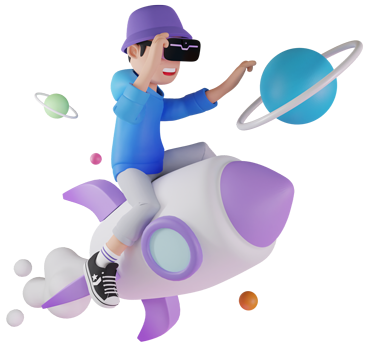In the fast-growing world of e-commerce, online stores face one major challenge: how to give customers the same confidence they get when shopping in a physical store. Shoppers want to touch, feel, and examine a product before buying—but on a website, they only see flat photos.
This is where 3D product modeling comes in as a game-changer. By transforming simple images into interactive, realistic 3D visuals, online retailers can improve product presentation, boost customer trust, and ultimately increase sales.
In this article, we’ll explore how 3D modeling helps businesses grow their e-commerce sales, reduce return rates, and stand out in the competitive digital marketplace.
✅ 1. Creates Realistic and Detailed Product Visuals
Traditional product photography can only capture limited angles. But 3D modeling allows customers to rotate, zoom, and explore a product from every perspective. This helps buyers see exactly what they are purchasing.
-
Customers get a better understanding of size, proportions, and textures.
-
Sellers can display multiple variations (colors, styles, fabrics) without expensive photoshoots.
-
High-resolution renders look professional, helping build brand credibility.
💡 Example: A furniture store can use 3D models to show the same sofa in 10 different fabrics, without making and photographing each version.
✅ 2. Reduces Product Returns and Increases Customer Trust
One of the biggest reasons customers return online purchases is that the product looks different from what they expected. This not only causes financial loss but also damages brand reputation.
3D modeling reduces this risk by giving customers a true-to-life product preview. When buyers know exactly what they’re getting, they feel more confident in completing the purchase.
📊 Industry Insight: Studies show that 3D visualization can reduce return rates by up to 25% compared to regular 2D images.
✅ 3. Offers Interactive Product Customization
Modern shoppers expect personalization. With 3D configurators, customers can change colors, designs, or materials and instantly see the updated product in real time.
-
Increases engagement—customers spend more time interacting with products.
-
Makes buyers feel more connected to their purchase.
-
Boosts sales by catering to individual preferences.
💡 Example: An online fashion store can let buyers customize a handbag—changing strap colors, textures, and designs—before checking out.
✅ 4. Saves Time and Marketing Costs
Photoshoots are costly and time-consuming. Each new product variation requires reshooting, editing, and retouching. With 3D modeling:
-
Businesses can create endless variations digitally.
-
3D assets can be reused across e-commerce websites, social media, print ads, and catalogs.
-
Faster product launches mean brands can react quickly to trends.
This makes 3D modeling a cost-effective long-term solution for e-commerce businesses.
✅ 5. Boosts Conversions and Online Sales
The goal of every e-commerce business is to convert visitors into buyers. 3D models keep customers on product pages longer because they are more engaging than static photos.
-
3D product views increase buyer confidence.
-
Interactive features create a memorable shopping experience.
-
Higher engagement improves SEO rankings, leading to more organic traffic.
📊 Conversion Fact: Research shows that stores using 3D product visuals can see up to 40% higher sales conversions.
✅ 6. Supports Augmented Reality (AR) Shopping
Augmented Reality (AR) is the future of e-commerce. With 3D modeling, customers can place digital products in their real environment using their smartphones.
-
A buyer can see how a table looks in their living room before buying.
-
Fashion brands can let customers try on virtual shoes or glasses.
-
This immersive shopping experience increases customer satisfaction and loyalty.
✅ 7. Improves Brand Image and Competitiveness
Brands that use modern technologies like 3D and AR instantly stand out as innovative and customer-focused. Offering advanced shopping tools not only attracts new buyers but also positions a business as a market leader.
In a competitive space where most stores still use static images, 3D modeling can be your unique selling point (USP).
Conclusion: The Future of E-commerce is 3D
3D product modeling is not just about design—it’s about creating an immersive, trustworthy, and customer-friendly shopping journey. From reducing return rates to boosting sales and enabling AR shopping, 3D models give online businesses a significant advantage.
If you want to grow your e-commerce sales and impress your customers, now is the time to invest in 3D modeling and visualization services.
At 3S Animation Studio, we help global brands bring their products to life with professional, realistic, and cost-effective 3D solutions. Whether you sell fashion, furniture, or electronics, we can create stunning 3D models that boost your sales.
📩 Contact us today, and let’s transform your e-commerce store into a next-level shopping experience!






